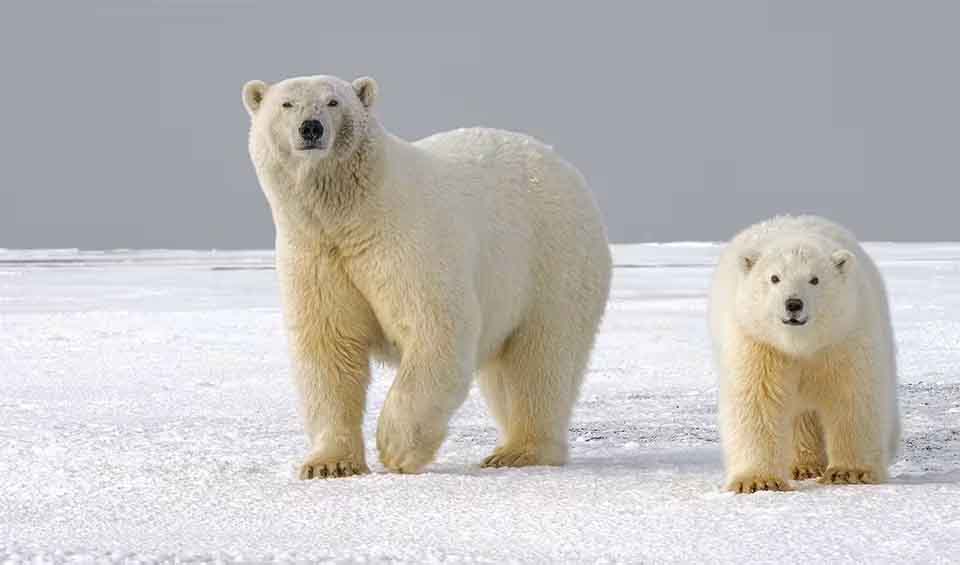Ursus – Bears
Genus of the largest land predators, weighing up to 700 kg (1500 pounds)
Members of this genus include not only the iconic Polar Bear (Ursus maritimus), the largest member of the bear family and a symbol of the Arctic’s wild beauty, but also other well-known species such as the Brown Bear (Ursus arctos), American Black Bear (Ursus americanus), and the Asian Black Bear (Ursus thibetanus). These species inhabit diverse environments across North America, Europe, and Asia, showcasing remarkable adaptability and ecological significance.
Bears of the genus Ursus display a broad spectrum of dietary preferences, primarily omnivorous, with variations that reflect their specific environmental adaptations. While the Polar Bear stands out as predominantly carnivorous, relying on seals and other marine mammals for sustenance, other Ursus members have a more varied diet. The Brown Bear, for instance, has a diet that can include fish, small mammals, carrion, fruits, nuts, and honey, demonstrating the genus’s flexible foraging behavior. This omnivorous diet is crucial for their survival across different habitats, allowing them to exploit a wide range of food sources.
Contrary to their sometimes clumsy appearance, Ursus bears are remarkably agile and capable animals. Many species within this genus, such as the American Black Bear, exhibit excellent climbing skills, allowing them to escape predators, forage for food, and find resting spots. Additionally, all Ursus bears are proficient swimmers, with the Polar Bear being particularly adept at navigating icy waters in pursuit of prey.
While their sense of sight is relatively undeveloped, bears have an exceptionally keen sense of smell, which is pivotal for locating food sources, detecting potential threats, and finding mates. This acute olfactory sense compensates for their other sensory limitations and plays a central role in their survival and reproductive success.
Species in this genus
Asian black bear
In Vietnam, these bears are caught, crammed into tiny cages, have their teeth removed to extract bile – sold as “medicine”
Polar bear
Living life on top of the world, but his kingdom is ever-narrowing
American black bear
America’s smallest and most widely distributed bear, endemic to North America
Brown bear
The second largest bear, right after the polar bear. Sadly, it well might top the list soon





